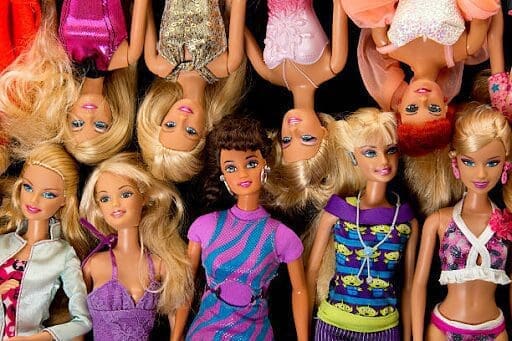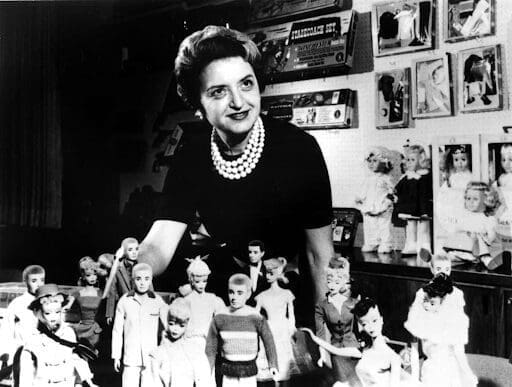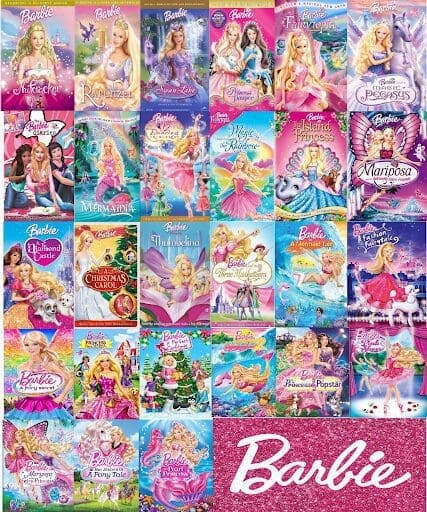
Growing up, like many children, I was obsessed with Barbie. Everything I owned was Barbie-themed. I was three when my dad came back from a business trip in Mumbai and bought me my first Barbie. I was the happiest kid that day. I used to be the typical girly girl who loved playing with Barbies and loved rainbows and sunshine and everything pink. But as I grew up, I didn’t care about the doll as much. Well, I still like pink—but coming back to the topic of discussion, Barbie. Despite all the criticism that Barbie has faced, how has she managed to become one of the most popular toys of all time, and why do we still care about her?
The History of Barbie

In the year 1959, Barbie, the doll that dominated the entire toy market, was introduced to the world. Ruth Handler, the inventor of the doll named after her daughter, Barbra, noticed her daughter playing with paper dolls, and she forced them into adult roles. Handler then realized that all dolls were made to look like kids. However, all little children want is to grow up and live an individualistic life. So, she envisioned a doll that looked like an adult, and little children could live vicariously through her. She envisioned a doll that helped little children dream as big as they wanted to and bring those dreams to reality by professing it onto the doll.
When she discussed the idea with her husband, Elliot Handler, the owner of the toy company Mattel, he didn’t think it was a good idea since the doll market was dying down at the time. So, she put that idea on hold until she came across a German sex doll named Bild Lilli. She copied the same design and marketed it to children under a different name, and that was the birth of Barbie, the teenage fashion doll that revolutionized the toy industry.
Source: PinterestBarbie: Yay or Nay?
Throughout the years, Barbie has faced a lot of negative criticism for perpetuating negative body image issues onto young minds. It has also been criticized for setting unrealistic, unhealthy, and unachievable beauty standards for children and epitomizing a white, cisgender, heterosexual role that women are expected to uphold. In the 90s, during the peak of the post-feminist era, people started to realize the negative gender stereotypes that Barbie upholds, and the sales went down. Therefore, Mattel launched Barbies with more diverse roles. They launched Barbie as a business executive, as a police officer, and as a presidential candidate. They also took Barbie digital and invested in the Barbie film series, which is something we will discuss later.
The remarketing and rebranding of Barbie plummeted its sales back up. Though I fully hold Barbie accountable for still upholding unrealistic beauty standards and negative gender stereotypes, however, “Barbie play” has also proved to be a liberating space for many children. Barbie gave them the freedom to be whoever they wanted and live whatever adult life they aspired for, in a fictional space, even though it felt unattainable. For many young queer children, playing with Barbie was a part of their awakenings and identity formations.
There is a lot of debate about whether Barbie is good or bad, and a ton of different and valid arguments exist on either side. On one hand, it imposes negative gender roles and causes body image issues. But on the other hand, it provides space for children to project their identities onto her, even those identities that may challenge these gender roles. So, yay or nay, you decide. Personally, though I believe all the negative criticisms against Barbie are completely valid, she was a huge part of my childhood. Barbie helped me dream the life that I wanted. Playing with Barbie, for me, was always about having the ability to imagine whatever life I wanted.

Who is Barbie, and What Does She Stand for?
Barbie is whoever you want her to be. Ruth Handler herself, in the book, Dream doll: The Ruth Handler Story, said, “My whole philosophy of Barbie was that through the doll, the little girl could be anything she wanted to be. Barbie always represented the fact that a woman has choices.” The identity of the doll depends on the person who played with her. Barbie doesn’t have one objective definition. She represents different things to different people.
There is a lot of discussion around who Barbie is and what she stands for. Does she symbolize a strong, independent woman who isn’t afraid to be her most authentic self, or does she symbolize an image that helps in maintaining unrealistic beauty standards? Tension around structure versus agency and choice versus constraint has existed about Barbie for a long time. Erica Rand, in her book, Barbie’s queer accessories, argues that while Barbie does provide a space for exploration and identity formation, the Barbie brand also promotes cultural hegemony. Barbie’s liberating ideology of individualism keeps you consenting to the Barbie brand, while at the same time, your support of the brand helps in upholding the image of Barbie that truly dominates, that is, the image of a thin, tall, blonde fashionista with a perfect-looking boyfriend.
Determining what Barbie truly stands for is an impossible task because, like most things in the world, Barbie has both good and bad elements to it.
The Barbie Film Series

With the decline in the sales of Barbie in the 90s, Mattel was looking for a way to increase the appeal of a doll that was made for a 50s problem; therefore, they decided to invest in the movies.
Barbie movies focus on female friendships through a female perspective; therefore, it allows the decentering of the male gaze and the recentering of the female gaze. The “male gaze” is a term first coined by film theorist Laura Mulvey in her essay, visual pleasure, and narrative cinema. According to her, the gaze of the traditional cinema is generally a male one. The male gaze is a way of looking at the world through a male perspective in a way that empowers men and objectifies women. Mulvey states that films, traditionally, are constructed for the pleasure of the male viewer and portray men in an active role while women are portrayed in a passive role.
In traditional cinema, the audience is forced to resonate with the male perspective, and that perspective becomes natural, while in reality, it only portrays the interest of the gender in power, that is, the cisgender heterosexual male. Barbie movies, however, do not focus on that perspective. It doesn’t fit into the box of mainstream cinema that focuses on the male gaze. Barbie movies identify with the female perspective. It focuses on female friendships, the struggles of being a woman (in a barbie context), and self-determination for women (again, in a barbie context).
Though it doesn’t mean that Barbie movies revolutionized narrative cinema, it does give space for children to look at the world from a female perspective.
About the Author: Ishita Jain is a first-year student at Manipal Institute of Communication, MAHE.

Be the first to comment